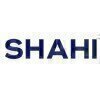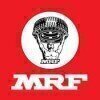Industrial Engineer
80+ Industrial Engineer Interview Questions and Answers

Asked in Delhivery

Q. What are the different new technologies which are used in logistics?
New technologies used in logistics include IoT, AI, blockchain, and autonomous vehicles.
IoT sensors for real-time tracking and monitoring of shipments
AI for predictive analytics and optimization of supply chain operations
Blockchain for secure and transparent tracking of goods and transactions
Autonomous vehicles for efficient and safe transportation of goods
Warehouse automation for faster and more accurate order fulfillment

Asked in Bajaj Auto

Q. Recent developments in Industrial Engineering, How to find bottleneck without any documents on assembly line
To find bottleneck without any documents on assembly line, observe the flow of materials and workers, analyze production rates, and identify areas with high wait times or low productivity.
Observe the flow of materials and workers on the assembly line
Analyze production rates and identify areas with high wait times
Look for areas with low productivity or frequent delays
Conduct time studies to measure the time taken at each workstation
Use process mapping techniques to visualize t...read more
Industrial Engineer Interview Questions and Answers for Freshers

Asked in CPS

Q. What are different lean tools used in Industrial Engineering?
Lean tools used in Industrial Engineering include 5S, value stream mapping, Kanban, Kaizen, and Poka Yoke.
5S - Sort, Set in order, Shine, Standardize, Sustain
Value stream mapping - Visual representation of processes to identify waste
Kanban - Visual scheduling system to control inventory levels
Kaizen - Continuous improvement through small incremental changes
Poka Yoke - Error-proofing techniques to prevent mistakes

Asked in CPS

Q. Are you familiar with recent Industrial Engineering trends?
Recent trends in industrial engineering include automation, sustainability, and data analytics.
Automation: Increasing use of robotics and AI to streamline processes and improve efficiency.
Sustainability: Focus on reducing waste, energy consumption, and environmental impact.
Data Analytics: Utilizing big data and machine learning to optimize operations and decision-making.
Supply Chain Optimization: Implementing strategies to improve supply chain efficiency and resilience.
Digita...read more

Asked in Denso Ten Minda India

Q. How do you manage people who you have warned several times for not being cooperative with changes made in the line?
Address the issue directly, provide clear expectations, offer support and training, and consider consequences if behavior continues.
Have a one-on-one conversation with the individuals to discuss the issue and express your concerns.
Clearly outline the expectations for cooperation and explain the importance of adapting to changes in the line.
Offer support and training to help them understand the changes and how they can contribute positively.
Consider implementing consequences i...read more

Asked in Uniparts Group

Q. What is the difference between cycle time and takt time? How do you distinguish between them?
Cycle time is the total time to complete a process, while takt time is the available time per unit to meet customer demand.
Cycle time is the time it takes to complete one cycle of a process, including both value-added and non-value-added activities.
Takt time is the available time per unit to meet customer demand, calculated by dividing the available production time by the customer demand.
Cycle time can be measured using a stopwatch or by analyzing historical data.
Takt time he...read more
Industrial Engineer Jobs




Asked in Delhivery

Q. Tell me about an example of Poka-Yoke.
POKA-YOKE is a technique used to prevent errors in a process by designing the process in a way that makes it impossible to make mistakes.
POKA-YOKE is a Japanese term that means 'mistake-proofing'
It involves designing a process or product in a way that makes it impossible to make mistakes
Examples include using different shaped connectors to prevent incorrect assembly, or designing a car key that can only be inserted one way
POKA-YOKE can improve quality, reduce waste, and incre...read more

Asked in Ralson Tyres Limited

Q. What is MOST and what are the different types of MOST?
MOST stands for Maynard Operation Sequence Technique. It is a tool used for process planning and scheduling.
MOST is a predetermined motion time system that helps in determining the time required to perform a task.
It is used to optimize the work process and reduce the time and cost involved.
MOST has three types: BasicMOST, MiniMOST, and MaxiMOST.
BasicMOST is used for simple tasks, MiniMOST for medium complexity tasks, and MaxiMOST for complex tasks.
MOST is widely used in manuf...read more
Share interview questions and help millions of jobseekers 🌟


Asked in Isgec Hitachi Zosen

Q. How can you implement 5'S in fabrication?
5'S can be implemented in fabrication by organizing and optimizing the workspace.
Sort and remove unnecessary items from the workspace
Set in order the necessary items in a logical and efficient manner
Shine and clean the workspace regularly
Standardize the processes and procedures for maintaining the workspace
Sustain the improvements by continuously monitoring and improving the workspace
Example: Use shadow boards to organize tools and equipment
Example: Implement visual managemen...read more

Asked in Delhivery

Q. What does DMAIC stand for in Six Sigma?
DMAIC is a problem-solving methodology used in Six Sigma to improve processes and reduce defects.
DMAIC stands for Define, Measure, Analyze, Improve, and Control.
It is a structured approach to problem-solving that helps organizations identify and eliminate defects in their processes.
The Define phase involves identifying the problem and setting goals for improvement.
The Measure phase involves collecting data to understand the current state of the process.
The Analyze phase invol...read more

Asked in Wistron

Q. What is Cycle time? Lead time? Down time? Upph?
Cycle time is the time it takes to complete one cycle of a process. Lead time is the time it takes to fulfill a customer order. Downtime is the time when a machine or process is not operational. Upph stands for Units Per Production Hour.
Cycle time is the time it takes to complete one cycle of a process.
Lead time is the time it takes to fulfill a customer order.
Downtime is the time when a machine or process is not operational.
UPPH stands for Units Per Production Hour and is a ...read more

Asked in Delhivery

Q. What are some examples of automation that logistics firms are using?
Logistics firms are using automation in various ways to improve efficiency and reduce costs.
Automated warehouses with robots and conveyor belts
Automated inventory management systems using RFID technology
Automated order processing and tracking systems
Automated transportation scheduling and routing systems
Automated delivery drones and autonomous vehicles
Automated predictive maintenance systems for equipment
Automated data analysis and decision-making systems
Asked in Mat India Technology

Q. What is Line balancing, VSM, Autonomis maintenance , heijunka , kanban
Line balancing, VSM, Autonomous maintenance, Heijunka, Kanban are lean manufacturing tools used to optimize production processes.
Line balancing is the process of evenly distributing work among production lines or workstations.
Value Stream Mapping (VSM) is a tool used to visualize and analyze the flow of materials and information in a production process.
Autonomous maintenance involves empowering operators to perform routine maintenance tasks on their equipment to prevent break...read more

Asked in Schaeffler India

Q. What is the process for obtaining approval for an investment budget?
The investment budget approval process involves several key steps to ensure proper evaluation and alignment with organizational goals.
Identify the need for investment: Assess areas requiring improvement or expansion, such as new equipment or technology.
Conduct a feasibility study: Analyze potential returns, costs, and risks associated with the investment.
Prepare a detailed budget proposal: Include itemized costs, projected benefits, and timelines for implementation.
Present th...read more

Asked in Delhivery

Q. Describe a scenario where you have to find a defective ball out of 6 using a weighing balance.
Identify the defective ball among 6 using a balance in just 2 weighings.
Divide the 6 balls into 3 groups of 2 balls each.
Weigh the first two groups against each other.
If they balance, the defective ball is in the third group.
If one group is lighter, the defective ball is in that group.
Take the lighter group and weigh the two balls against each other.

Asked in Isgec Hitachi Zosen

Q. How do you calculate weld deposition?
Weld deposition can be calculated by multiplying the weld bead cross-sectional area by the length of the weld.
Measure the cross-sectional area of the weld bead
Measure the length of the weld
Multiply the cross-sectional area by the length of the weld to get the weld deposition
Weld deposition can be expressed in cubic inches or cubic millimeters

Asked in Ralson Tyres Limited

Q. What is a skill matrix and operator rating?
Skill matrix is a tool used to assess the skills of employees. Operator rating is a measure of an operator's performance.
Skill matrix helps identify skill gaps and training needs
Operator rating is based on factors such as productivity, quality, and safety
Skill matrix and operator rating are used to improve workforce efficiency and effectiveness

Asked in Parksons Packaging

Q. What do you mean by Industrial Engineering?
Industrial engineering is the optimization of complex processes, systems, and organizations to improve efficiency and productivity.
Industrial engineers use math, science, and engineering principles to analyze and improve processes.
They focus on reducing waste, increasing efficiency, and improving quality.
Examples of industrial engineering applications include supply chain management, production planning, and quality control.
Industrial engineers work in a variety of industries...read more

Asked in Bharat FIH

Q. What is ECRS ,SMED ,KPI ,TIME STUDY
ECRS is a method used in industrial engineering to analyze and improve processes. SMED is a technique for reducing setup time. KPIs are performance metrics. Time study is a method for measuring work performance.
ECRS (Engineering Change Request System) is a method used to manage and track changes in engineering processes.
SMED (Single-Minute Exchange of Die) is a technique used to reduce setup time in manufacturing processes.
KPIs (Key Performance Indicators) are measurable valu...read more

Asked in Continental

Q. Any kind of information you know about tires
Tires are rubber components that provide traction and support for vehicles.
Tires come in different sizes and types for different vehicles and purposes.
Tire pressure should be regularly checked and maintained for optimal performance and safety.
Tire treads are designed to provide grip and prevent hydroplaning on wet roads.
Tires can wear out over time and need to be replaced to ensure safety on the road.
Winter tires are designed to provide better traction in snowy and icy condit...read more

Asked in Jawandsons

Q. How would you implement lean tools on an empty shop floor?
I will start by analyzing the current processes and identifying waste. Then, I will implement 5S, value stream mapping, and continuous improvement.
Analyze current processes and identify waste
Implement 5S to organize the workplace
Use value stream mapping to identify areas for improvement
Implement continuous improvement through Kaizen events
Train employees on lean principles and encourage their participation
Monitor progress and adjust as necessary

Asked in Shahi Exports

Q. What is the textile and what is the fabric
Textile refers to any material made of fibers or yarn, while fabric is a specific type of textile that is woven or knitted.
Textile can be made from natural or synthetic fibers, including cotton, wool, silk, polyester, and nylon.
Fabric is created by weaving or knitting fibers together to form a flat, flexible material.
Examples of fabrics include denim, silk, wool, and polyester.
Textiles are used in a wide range of products, including clothing, bedding, towels, and upholstery.
T...read more

Asked in Uniparts Group

Q. How can you reduce manpower using balancing techniques?
By optimizing processes and automating tasks, manpower can be reduced while maintaining productivity.
Identify tasks that can be automated
Implement lean manufacturing principles
Use technology to streamline processes
Cross-train employees to increase flexibility
Implement a continuous improvement program
Use data analysis to identify areas for improvement

Asked in MRF Tyres

Q. What is Overall Equipment Effectiveness (OEE)?
OEE is a metric used to measure the efficiency of manufacturing processes.
OEE takes into account three factors: availability, performance, and quality.
It is calculated by multiplying these three factors together.
OEE can be used to identify areas for improvement in manufacturing processes.
For example, if a machine has a low OEE due to frequent breakdowns, maintenance may need to be improved.
A perfect OEE score is 100%, but most manufacturing processes have room for improvement...read more

Asked in Punjab National Bank

Q. What are the requirements for setting up an industry?
Requirements for setting up an industry include proper planning, sufficient capital, skilled workforce, necessary permits, and a suitable location.
Proper planning is essential to determine the type of industry, target market, and production process.
Sufficient capital is needed for purchasing equipment, raw materials, and covering operational costs.
Skilled workforce is necessary to operate machinery, manage production, and ensure quality control.
Obtaining necessary permits and...read more

Asked in Isgec Hitachi Zosen

Q. How do you calculate SMH?
SMH can be calculated by dividing the total time taken to complete a task by the number of units produced.
SMH stands for Standard Minute Hour
It is used to measure the productivity of a worker or a machine
Formula: SMH = Total time taken to complete a task / Number of units produced
Example: If it takes 120 minutes to produce 100 units, then SMH = 1.2 minutes per unit

Asked in CPS

Q. What are 5S and Six Sigma?
5S is a methodology for organizing a workplace for efficiency and effectiveness, while 6-Sigma is a data-driven approach for process improvement.
5S focuses on Sort, Set in order, Shine, Standardize, and Sustain to create a clean and organized work environment.
6-Sigma aims to reduce defects and variation in processes by using statistical methods and tools.
Both methodologies are used in industrial engineering to improve productivity and quality.
Example: Implementing 5S in a man...read more

Asked in Dhoot Transmission

Q. What is line balancing?
Line balancing is the process of assigning tasks to workstations in a way that evens out the workload and maximizes efficiency.
Involves distributing work evenly among workstations
Minimizes idle time and bottlenecks
Helps improve productivity and reduce production costs
Example: In an assembly line, tasks like welding, painting, and assembly are balanced to ensure smooth workflow

Asked in Delhivery

Q. What is logistics?
Logistics is the process of planning, implementing, and controlling the movement of goods from one place to another.
Involves transportation, warehousing, and inventory management
Optimizes supply chain efficiency and reduces costs
Examples include shipping, trucking, and air cargo
Important in industries such as retail, manufacturing, and healthcare

Asked in Deepak Chem Tech

Q. Types of distillation
Distillation is a process used to separate mixtures by heating and cooling. Types include simple, fractional, and vacuum distillation.
Simple distillation is used to separate liquids with different boiling points.
Fractional distillation is used to separate liquids with similar boiling points.
Vacuum distillation is used to separate liquids with high boiling points or heat-sensitive compounds.
Interview Questions of Similar Designations
Interview Experiences of Popular Companies








Reviews
Interviews
Salaries
Users

















